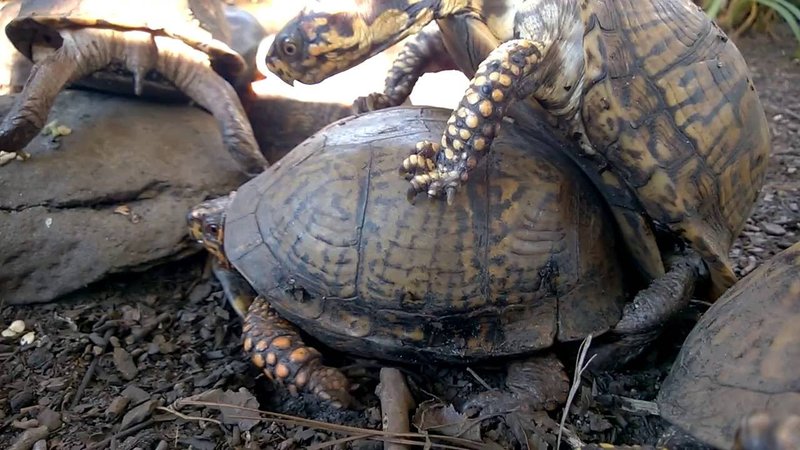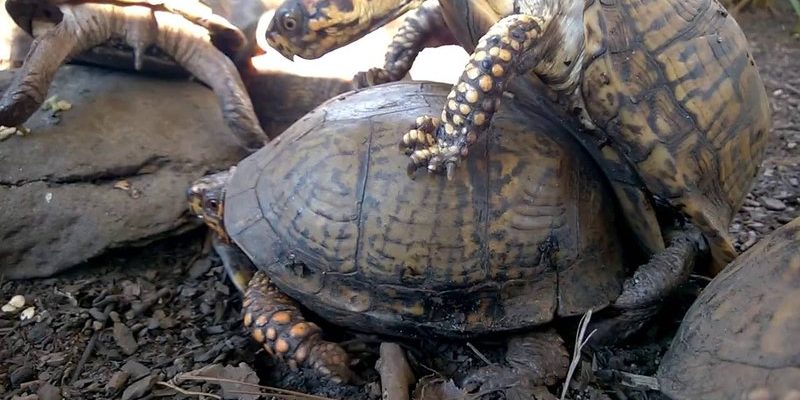
In this article, we’ll dive into the intriguing breeding and reproductive behavior of turtles. We’ll explore how they court each other, the nesting process, and what it takes to ensure their young survive. Whether you’re a turtle lover, a budding biologist, or just curious about these ancient reptiles, you’ll find something interesting here.
Understanding Turtle Mating Practices
Turtles are known for their specific mating habits. During the breeding season, typically in spring or early summer, male turtles become quite active. They’ll often engage in a courtship ritual that can be quite captivating to observe. Males may swim around the females, trying to get their attention through a variety of behaviors, such as gentle nibbles and head bobbing. It’s like a little underwater dance party, where the males are showing off their best moves!
Once a female turtle is receptive, copulation can occur. The male will grip the female’s shell with his claws to help him stay on top during mating. This can take some time, sometimes lasting several hours! After mating, the female may store the sperm for several months before fertilizing her eggs, allowing her to choose the best timing for nesting.
Nesting: Where Magic Happens
After mating, it’s time for the female to find the perfect spot to lay her eggs. Nesting sites are usually chosen based on safety and location. For many turtles, this means heading to sandy beaches or soft soil away from predators. They instinctively know that a good nesting site increases the chances of their young surviving.
Once she finds the right spot, the female digs a hole using her back legs. It’s a labor-intensive process. After digging, she lays anywhere from a handful to several dozen eggs, depending on the species. For example, a loggerhead turtle can lay over 100 eggs in one go! After laying the eggs, she covers them with sand, leaving her little ones to hatch on their own. It’s a tough world out there!
Incubation and Hatching
Now, here’s where the waiting game begins. Turtle eggs typically incubate for about 60 to 90 days, but this can vary based on species and environmental conditions. What’s fascinating is that the temperature of the sand can determine the sex of the hatchlings! Warmer temperatures generally produce females, while cooler temperatures yield males. This temperature-dependent sex determination is crucial for maintaining a balanced population.
Once the eggs hatch, the baby turtles—often referred to as hatchlings—emerge from the sand and make their way to the water. Imagine them scrambling over the sand, instinctively heading for the ocean. Unfortunately, they face many dangers along the way, including predators and human interference. Only a small fraction of hatchlings survive to adulthood.
Parental Care and Survival
Unlike many mammals, turtles don’t provide parental care after the eggs hatch. Once the hatchlings make it to the ocean, they are largely on their own. This might sound harsh, but it’s a part of the turtle’s life cycle. The survival rate is low, but those that do survive face various challenges. They have to learn to find food, avoid predators, and adapt to their environment.
Interestingly, some species of turtles do show a bit of maternal instinct. For instance, certain freshwater turtles will stay close to their nesting sites for a short period after laying eggs, providing some level of protection. However, this behavior isn’t the norm across all species.
Challenges to Turtle Reproduction
Turtles face numerous challenges during their reproductive cycles. Habitat loss due to development and pollution poses significant threats. Beaches where sea turtles nest can be disrupted by human activities, leading to lower hatchling success rates. Moreover, climate change is increasing sand temperatures, which can skew the sex ratios of hatchlings.
Additionally, predation on eggs and hatchlings remains a major challenge. Animals like raccoons and birds often raid nests, while marine predators wait at the water’s edge. Conservation efforts are essential to help protect nesting sites and improve survival rates for hatchlings.
Conservation and Protection Efforts
With the threats turtles face, conservation has become crucial. Many organizations work tirelessly to protect nesting beaches, educate the public about turtle conservation, and conduct research to better understand their needs. Beach cleanups, nesting site monitoring, and even creating artificial nesting habitats are some steps being taken.
Community involvement is also key. Local communities can help by respecting nesting sites, keeping beaches clean, and reporting any disturbances to wildlife authorities. Each little effort helps the turtles thrive and ensures that future generations can witness their incredible life cycle.
The Future of Turtle Reproduction
Looking ahead, the future of turtle reproduction depends on a combination of natural behaviors and human intervention. As we learn more about these ancient creatures, we can adapt our conservation strategies to support their needs. Researchers continue to study turtle populations, nesting patterns, and reproductive health to ensure they can flourish in a changing world.
In conclusion, the world of turtle breeding and reproduction is as intricate as the creatures themselves. From their elaborate courtship rituals to the challenges of nesting and hatching, turtles have a unique and captivating life cycle. By supporting conservation efforts, we can help ensure these remarkable reptiles continue to grace our planet for generations to come. So next time you see a turtle, remember all the incredible work going on beneath that shell!

